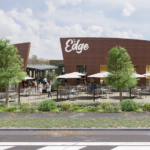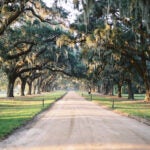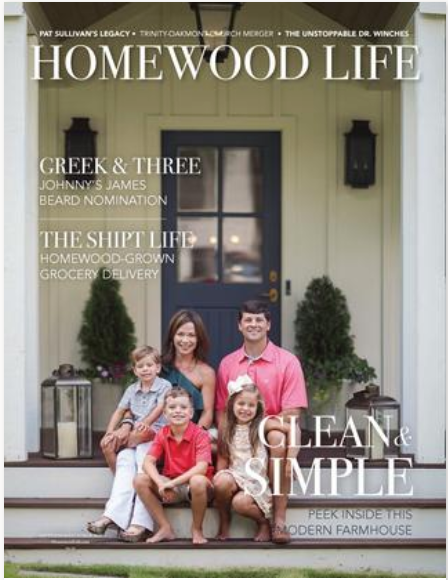When I began working on the Images of America: Homewood history book a few years ago, I thought the job would simply involve tracking down some old photos of Homewood and writing a brief summary about each of them. I failed to realize that the process would become less about the photos and more about the people that I had the opportunity to get to know. Almost four years later, I still keep in touch with many of these people that I now call friends. In the process of working on the book, I became particularly fond of one neighborhood. It was one of the first areas settled by people in Shades Valley, and its residents are still proud of their history. Rosedale has a unique history, and I found the people in that community to be some of the most inviting and welcoming people I’ve ever been around. This is their story.
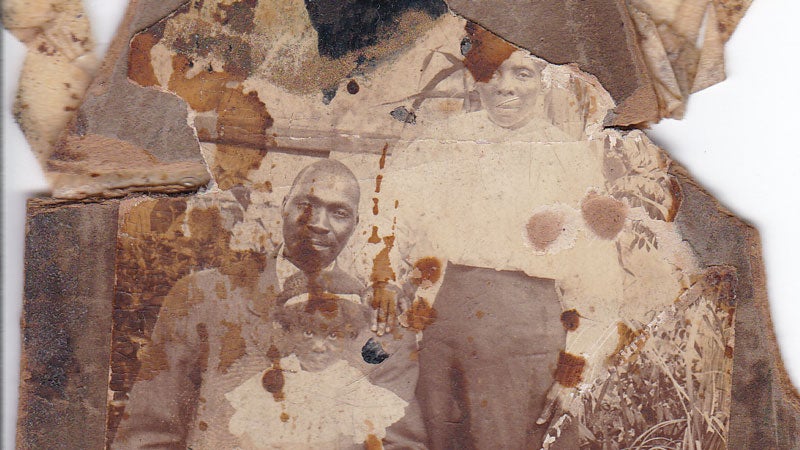
John Wilkins, pictured here with his family, is a strong example of the kinds of people who came to Rosedale near the turn of the twentieth century. Born as a slave in Mississippi, legend has it that Wilkins walked to Rosedale barefoot in search of work. He created a new life for his family in Rosedale, and several of his descendants have graduated from Homewood High School.
In the winter of 2014, I was teaching eighth-grade history at Homewood Middle School when my 1993 Ford Bronco began having trouble, and I needed a new engine soon. I didn’t live too far from the school, so I decided that I would just ride my bicycle to school. Every day, I would bike through Rosedale—Homewood’s oldest neighborhood, which was settled by settled by former slaves after the Civil War and stretches from the southern slope of Red Mountain to Oxmoor Road in downtown Homewood—looking for anyone who I thought might have some old photos of the neighborhood to help me with the book.
Eventually I was invited to a chicken and waffle dinner and Lent service Bethel A.M.E. church right off 18th Street. Afterward, I sat around for a few hours looking over old Rosedale High School yearbooks and learning about the “Mighty Sons of Kong” with Mr. Thomas Hamner, the Shepherd family and Mr. Edwards Perkins Montgomery Jr. Just like my friends and I played wiffle ball, and spent our afternoons at Doug’s, Dino’s and Sam’s, these men spent their summer days playing sports and eating at Mrs. Carrie’s and Mrs. Johnson’s. Although most neighborhoods in Homewood have stayed relatively the same, a lot has changed in Rosedale.
The neighborhood now occupies a fraction of the geographical space that it did 100 years ago. 18th Street, once lined with houses all the way south to Oxmoor Road, slowly gave way to more business and commercial development. In fact, some of the buildings on 18th Street still have the original framing of the houses within them. With the construction of the Red Mountain Expressway and US Highway 280, most people who lived on the north side of 28th Avenue South sold their property to be developed as commercial. There is now only one house left in that portion of Rosedale.
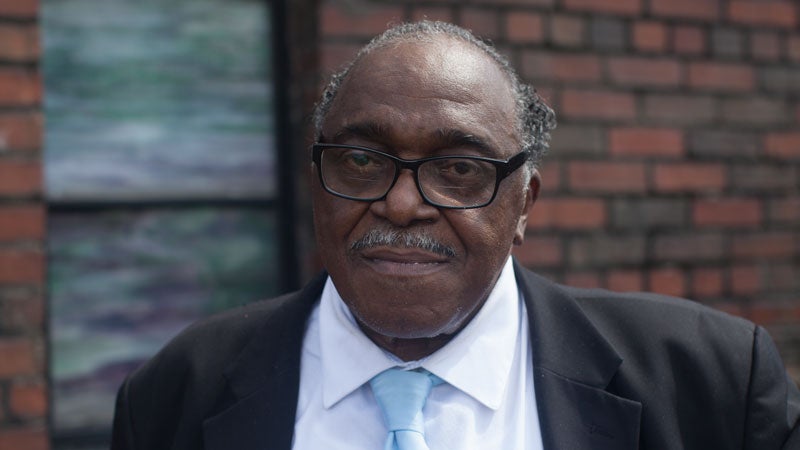 Montgomery Family Heritage
Montgomery Family Heritage
Let me introduce you to my friend, Mr. Montgomery. Edward Perkins Montgomery Jr. was born to Edward Perkins “E.P.” Montgomery Sr. (1899-1994) and Queen Esther Jackson (1902-1988) in 1941. The Montgomery family was from a town called Germany in Monroe County, Alabama, and they first appeared in Homewood in the 1920 census.
E.P. Sr. had several brothers who also came to Rosedale. The most well-known brother was Bishop Martienne Montgomery, the principal of Rosedale High School from 1925-1967. B.M. Montgomery, also known as “Fess,” did as much as anyone in the history of Jefferson County to improve education for blacks. Students came from all over Shades Valley to attend Rosedale High School, and when kids lived too far away to get to school on their own, he convinced Jefferson County to bus children to the school. Students at Rosedale High School were eating lunch in the basement of a house on top of the hill, and it soon became difficult to feed all the students. B.M. Montgomery petitioned the county for money to build a cafeteria and an auditorium. When told there was only enough money for one, he had a “cafetorium” built. B.M. Montgomery always found a way to do what was best for his students.
Mr. Montgomery has become a collector of all things Rosedale. As the rest of his family scattered throughout the country, he stayed, living in the back of his father’s old barbecue restaurant on 27th Avenue South. One time he mentioned how Rosedale High School saved his life. At Rosedale High School, everyone learned how to type, even the boys, he explained. After Mr. Montgomery was drafted for the Vietnam War, the military discovered that he could type, and he was quickly assigned desk duty. Mr. Montgomery wasn’t trying to avoid active service, but to his knowledge, no one who he went through basic training with made it back home after the war. His education at Rosedale High School literally saved his life.
He also talked a lot about the pride of the students at Rosedale High School. Dress codes were strictly enforced, and discipline at the school was never an issue. Mr. Coger, a 6-foot-7-inch coach who towered over everyone, met the students every day as they got off the bus. Students were lined up outside every morning and were required to salute the flag and recite the pledge of allegiance together. Bussing students from all over Jefferson County could have created trouble at Rosedale High School, but Mr. Coger insured that there were never any discipline issues. B.M. Montgomery, Mr. Coger and the rest of the Rosedale High School staff created an environment where kids wanted to go to school. According to Mr. Montgomery, the school was run so well that “the only thing you could do was to do right.”
Mr. Montgomery’s most fond memory of Rosedale High School was walking with the marching band on the way to the football games at the Ball Diamond, just west of the old Shades Valley High School. The band would lead fans south down 18th Street and then left on 28th Avenue South, before making a final left turn headed north on what is now the Red Mountain Expressway.
Years later, he can identify everyone in his old photos and tell you what each person in them is doing now. Rosedale High School has sent doctors, lawyers and teachers all throughout the country. One day, we came across one of a woman standing in the middle of the road, and I asked who it was. Closing his eyes and taking a deep breath he said, “Oooo… that’s Barbara Tubbs…Barbara Tubbs Pope. She’s good looking!” I began to piece together that she was the same women that several other people had told me that I needed to visit, so I made a note to go by her house.
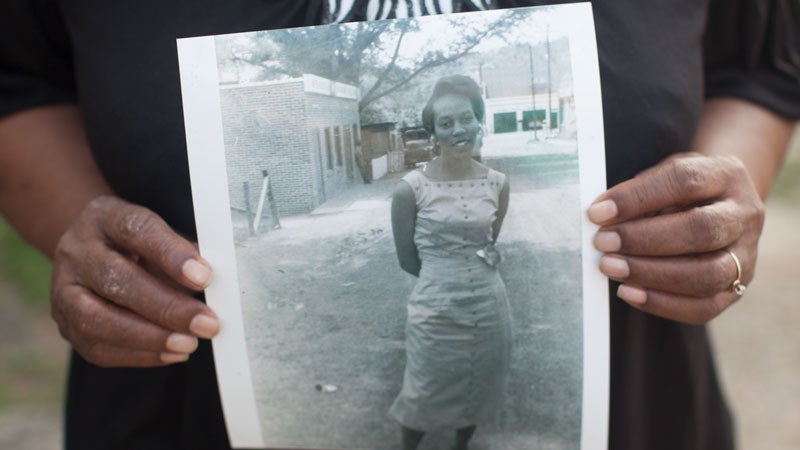 Rosedale Reunions
Rosedale Reunions
No one seemed to have Mrs. Barbara’s phone number, but everyone told me just to go walk into her house. Hesitant to barge into a stranger’s home, I waited a few weeks before finally mustering the courage to do so. I knocked, waited and knocked again. Finally, an older woman, looking over the top of her glasses dangling on the end of her nose, came to the door and said, “Boy! Why didn’t you just come on in?”
Barbara Tubbs Pope was born to Albert Tubbs (1905-1957) and Ethel Edgerton (1904-1976) in 1938. The Tubbs and Edgerton families both came out of Perry County, Alabama, and both appear in Homewood in the 1930 Census. Mrs. Barbara’s maternal grandfather, Robert Burrell Edgerton (1866-1955), lived on 19th Place in Rosedale and was well known for his penmanship. He worked closely with Damon Lee, and accordingly, a photo of Lee is prominently on display at her house. Mrs. Barbara even has an original letter written to Damon Lee, perhaps the best known business man in Rosedale in its early days, from the Ku Klux Klan.
Mrs. Barbara grew up on 19th Place, in between 27th and 28th Avenue South. 28th Avenue South was the unofficial dividing line between the white and black section of Rosedale. Everything to the south of 28th Avenue was white, and everything to the north was black. If you look back at the 1920 Federal Census, it’s a clear reminder of the once segregated South. Although racial tensions in Birmingham in the 1960s were tense, Mrs. Barbara doesn’t remember any major issues in Rosedale.
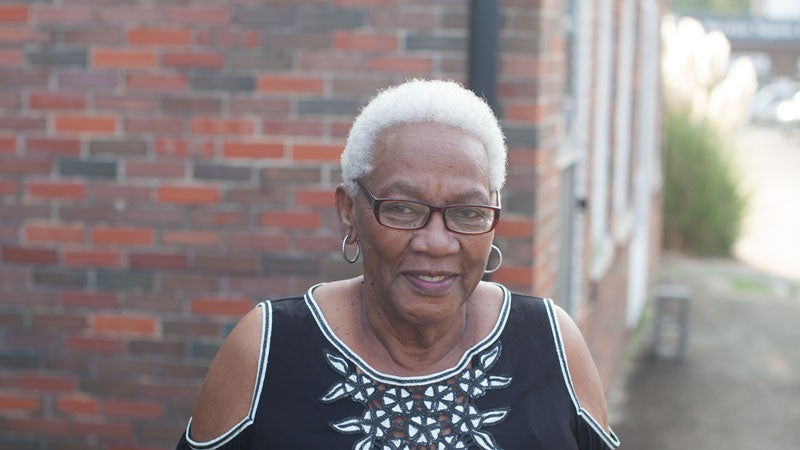 Mrs. Barbara plans Rosedale High School reunions every other summer and organizes Rosedaliens to take out ads for a publication that is sold at the reunions. Families fill these books with photos and updates and they help people who no longer live in the neighborhood stay connected. What’s most fascinating to me about Rosedale is how much everyone knows about each other. It’s not in a nosey neighbor kind of way, but rather a way in which people care for one another and genuinely want to keep up with each other.
Mrs. Barbara plans Rosedale High School reunions every other summer and organizes Rosedaliens to take out ads for a publication that is sold at the reunions. Families fill these books with photos and updates and they help people who no longer live in the neighborhood stay connected. What’s most fascinating to me about Rosedale is how much everyone knows about each other. It’s not in a nosey neighbor kind of way, but rather a way in which people care for one another and genuinely want to keep up with each other.
What draws me to Mrs. Barbara is that she continues to embody the values have made Rosedale such a wonderful neighborhood even from it’s inception over 100 years ago. One of my favorite sayings from her is, “I don’t have much to give you, but I can give you love.”
A few weeks ago, Mrs. Barbara called me and said she wanted to have me over for dinner to meet some of her family. Fully expecting to meet cousins, nieces, and nephews, I was a little surprised to show up and find a white family sitting at her table. I soon found out that Trent, a former Samford student, had befriended Mrs. Barbara several years ago while working at Piggly Wiggly. Although he now lives in Nashville, he, along with his wife and three kids, still stops in to visit Mrs. Barbara when they’re passing through town.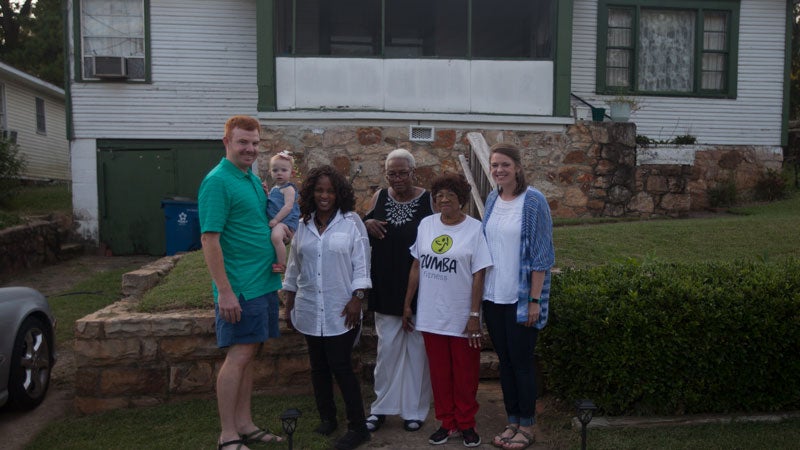
Recently my conversations with Mrs. Barbara revolve around church, college football and our families. We rarely discuss the future of Rosedale because I can tell that it saddens her to see how much the neighborhood has changed. However, her perspective on Rosedale has helped me tremendously, and I think we can all learn from her. She wants to see the neighborhood thrive and always tells me that the only way that will happen is if we love our neighbors. According to Mrs. Barbara, we’re all God’s children and we need to love each other. She doesn’t care what color you are or what neighborhood your from. She treats everyone the same.
It’s been several years since the history book I was working on back in 2014 was published, but I still get calls every now and then from people who have pictures they want to share. I always make time for people, the Mr. Montgomerys and Mrs. Barbaras, and it’s not just for the pictures. Pictures to be scanned or words for a book cannot capture the joy I have in developing relationships with people. I’ll always be thankful for those bike rides through Rosedale that led me to so many new friends. I still drive through Rosedale at least once a week. It’s not to knock on the doors of strangers to ask for pictures. Now, it’s to visit people I call friends.
ROSEDALE: The Early Years
1839
The Watkins family purchases what would become Rosedale.
1889
Clifton Land Company and Benjamin F. Roden take ownership of the area. Since there was no navigable road through lone pine gap (currently 18th Street), the company sold most of the land to blacks who worked in the mines on Red Mountain.
1887
Walnut Street Baptist Church (later First Baptist Church) was organized by Reverend J. W. White, and soon after Healing Spring Baptist Church was organized. In March of 1914, the two churches decided to unite and formed Union Baptist Church.
1890
The US Federal Census date from this year was destroyed in a fire, leaving a gap when trying to figure out exactly when people began to settle in Rosedale.
1897
Bethel A.M.E. Church was begun under the leadership of S. T. Grove. This and the other churches would be instrumental educating many of the young children in and around Shades Valley.
1900
Although Rosedale is known to most people as a historic black community, the 1900 US Federal Census paints a picture of a diverse community full of blacks, whites and immigrants from all over Europe at the turn of the century.
1926
Friendship Baptist was started by former members of Union Baptist.






